I have been interested in trying out 4x5 photography for a while. I think it's the natural progression of film photography - 35mm is easy and accessible, and then you get the itch for trying bigger and bigger negatives. Then, add the fact that all the cameras look vintage and cool. I mean who doesn't want to be the guy hiding under a dark cloth to take photos with a 60 year old camera?
Though, I guess I am leaving out the most important part of large format photography - the camera movements! Quick camera lesson: In most 35mm and medium format cameras, the lens and film planes are, for the most part, fixed. Large format cameras typically have two standards, each for the lens and for the film plane, separated by flexible bellows. This allows both the lens and film plane to move independently. What does this do you ask? Well it allows you to do a number of things - control perspective and parallel lines, increase depth of field, use selective focus, correct/distort sizes etc. Pretty cool stuff, and gives you a lot of latitude for controlling your image.
I found decent deal on a Linhof Technika III that someone was in the process of restoring. This Tech III model was made in 1953 or 1954. Technika's originally were all-metal press cameras, similar to the old Graflex press cameras. However, the Techs also had more available movements, and are now considered by many a heavy-duty field camera. The Tech III is often undervalued with the Linhof crowd. First off, it lacks a front tilt movement. The effect can be achieved by dropping the bed and raising the standard, but it's not the most ideal solution. Also starting with the Linhof IV, the parts became standardized allowing for backward compatibility with newer models. Thus, the Tech III has different lens boards and backs which are becoming more and more rare. Regardless, these German-made cameras are VERY solidly constructed, and the Tech III is still an awesome camera.
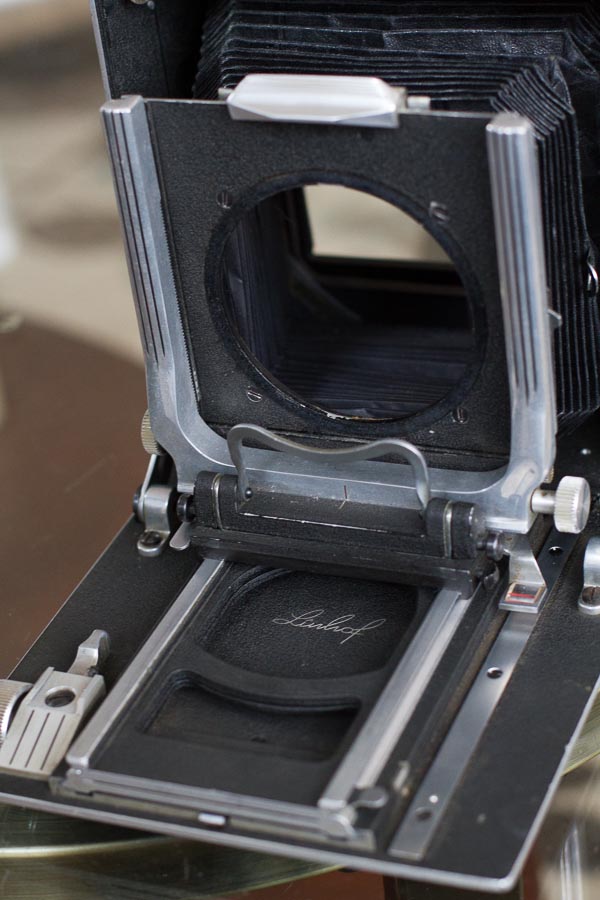
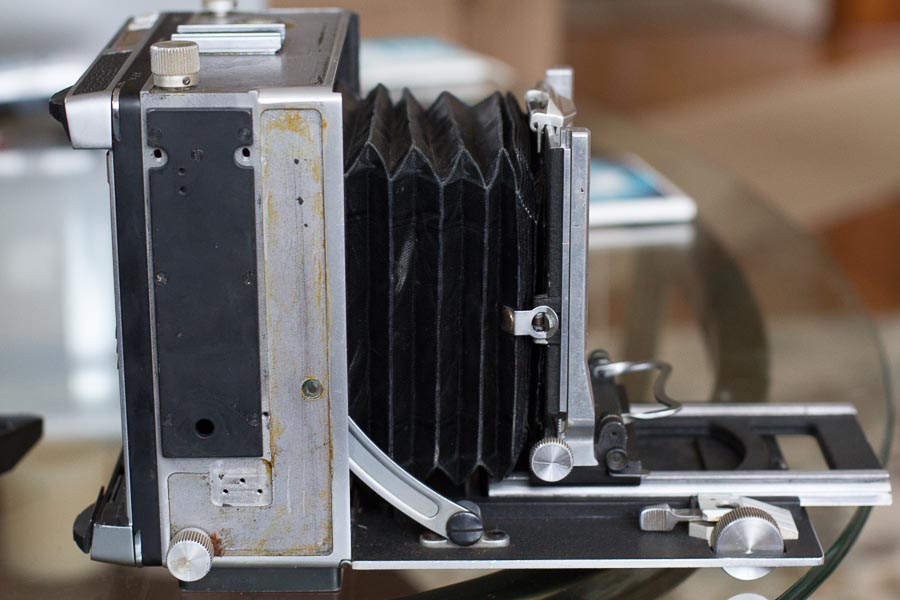
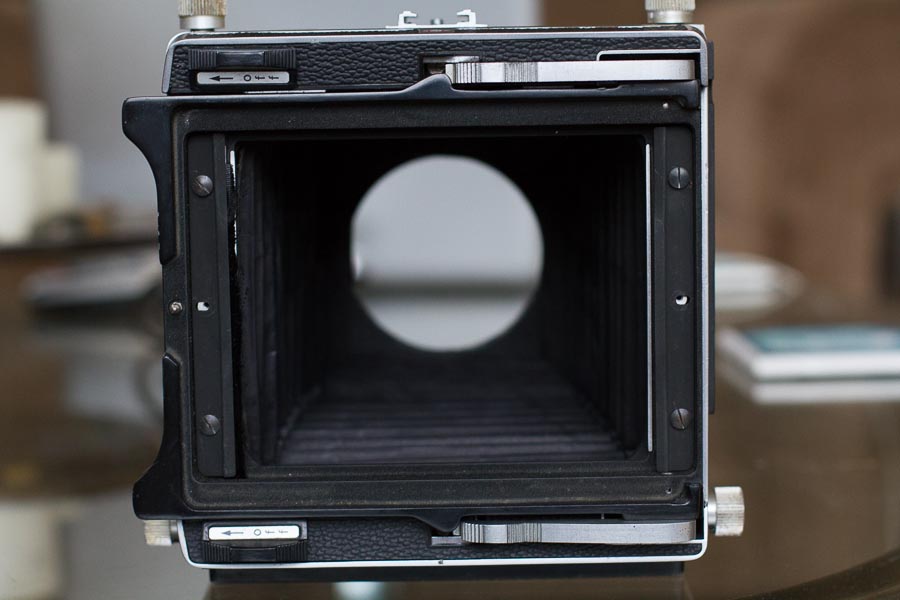
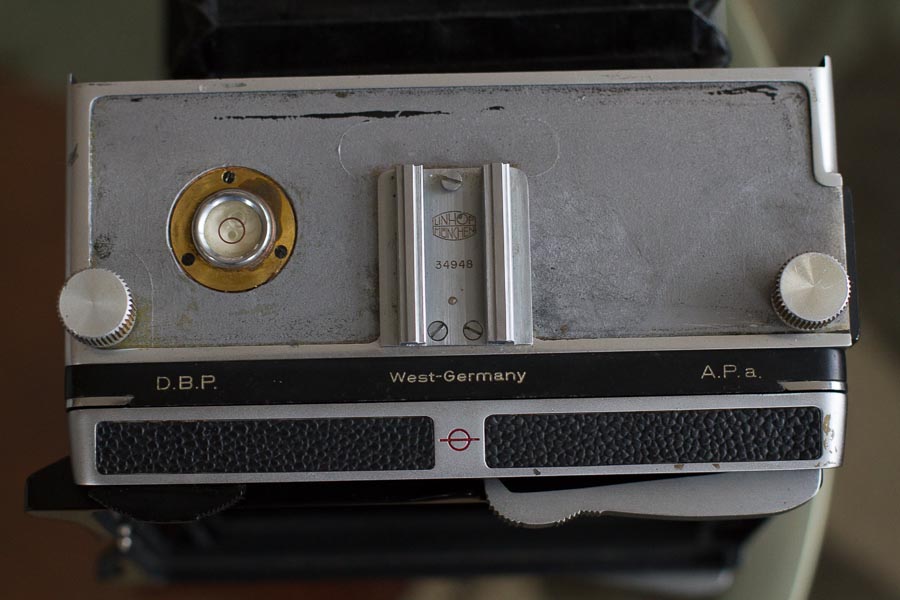
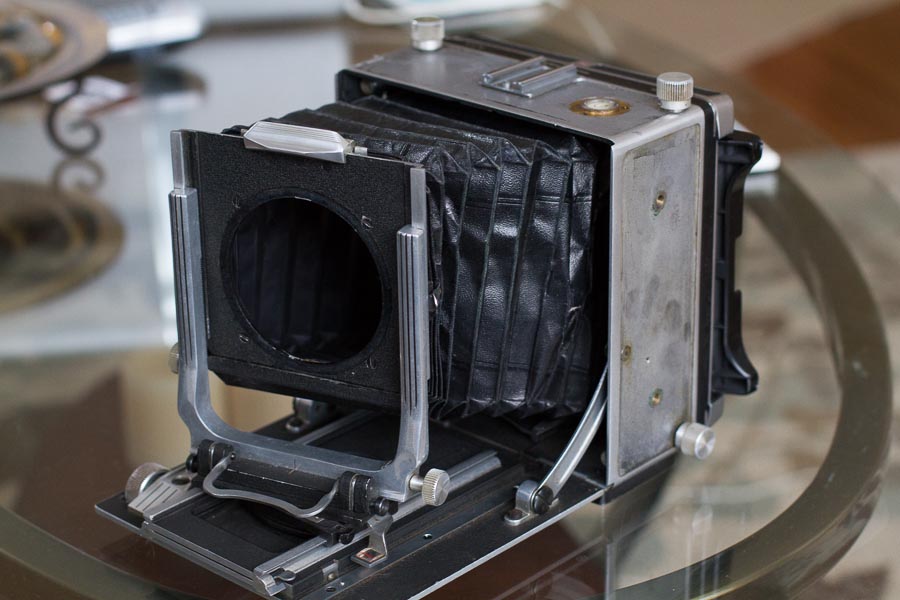
When I received the body, the rangefinder assembly had been completely taken off and replaced with a solid metal plate. This is done to shave weight off the camera, and because the rangefinders in these cameras are pretty useless (matching cams are also hard to find!). The leather had also been partially removed. The previous owner was also sent me parts to a back that came from a newer Tech IV or V. It was still missing the focusing hood assembly, ground glass, and a spring to hold it all together.
I first used a screwdriver to scrape off the remainder of the leather, then followed that up with acetone to remove all the old, gross adhesive. Camera leather came from the folks at www.cameraleather.com. They custom cut leather for pretty much any camera under the sun. Pretty reasonably priced and quick shipping. I used the cheapest option (pebble vinyl), but it still came out looking great!
Original spring that was on one side of the back.
My rendition of the spring. Bent by sheer force and willpower.
Using some pliers and a stiff steel wire I found at the hardware store, I bent the wire to match the other spring that hold the film holders in place when inserted. I found an original Linhof door and leather hood off eBay. Finally, I ordered a Yanke 2-in-1 Ground Glass/Fresnel Screen from eBay seller in Hong Kong. He specializes in large format bellows, hoods, ground glass, and fresnels (check out seller ecbuyonline2008). As I applied the leather, there were a couple of spots of odd sized divots, where a washer or small thin metal plate once filled it in. To get the leather to apply correctly, I used some cut up grocery store membership cards to fill in the gaps.
So after much tinkering and tedious leather application, I finally got it all put together. From where this camera was when I first got it to where it is now is a vast improvement, and I am quite proud of the work i put into it!
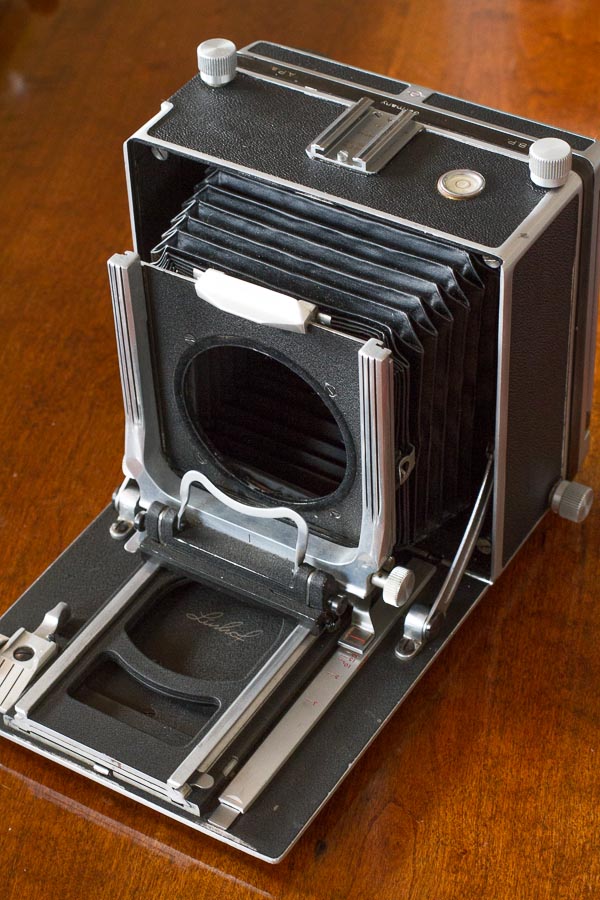
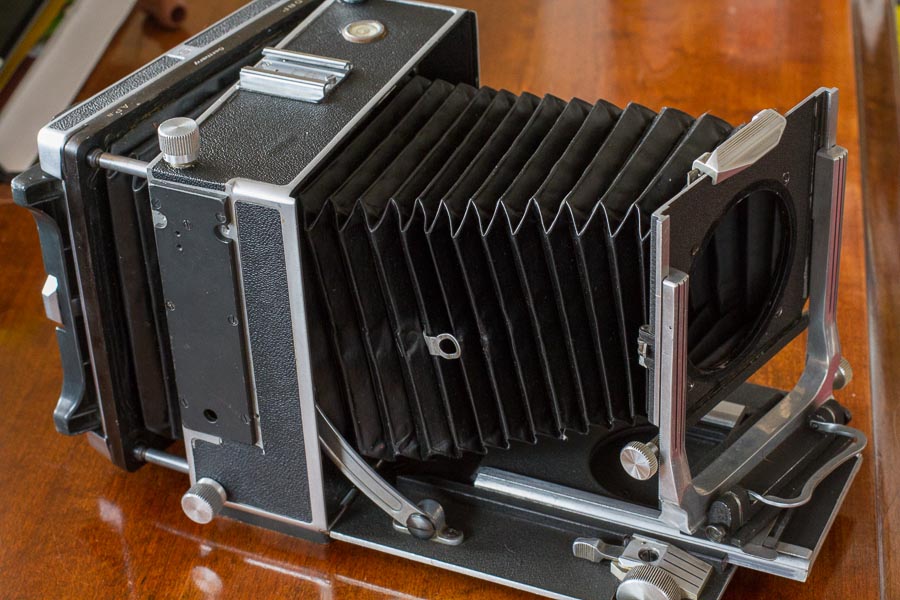

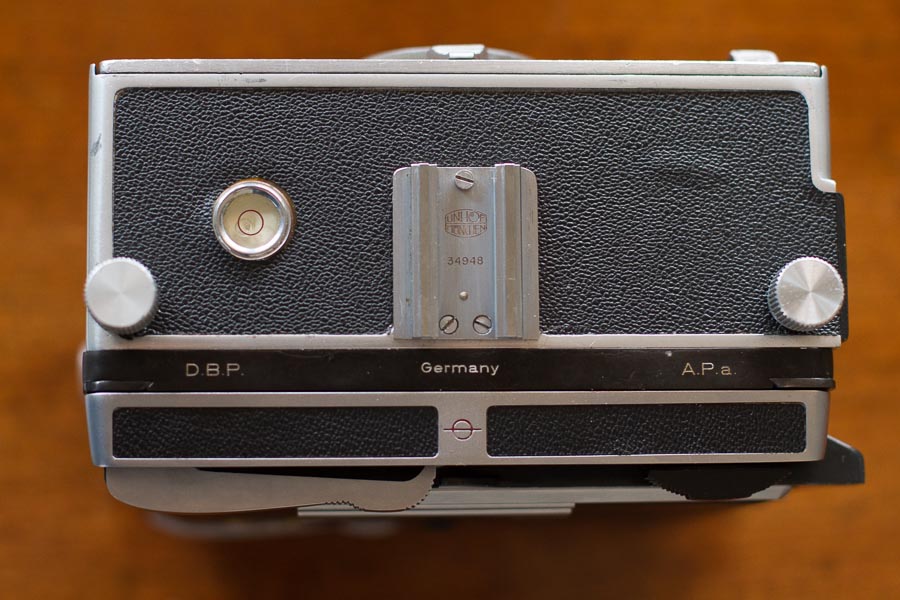
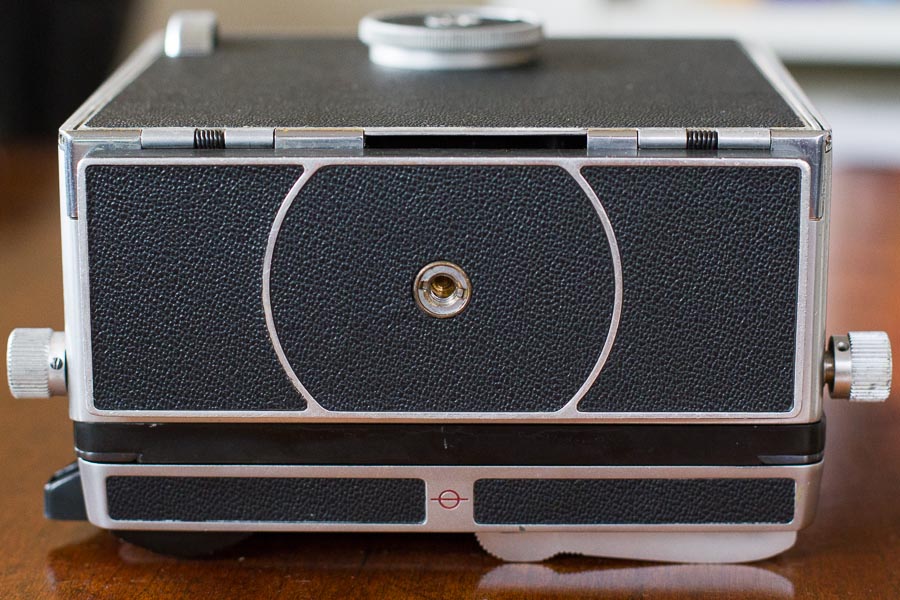
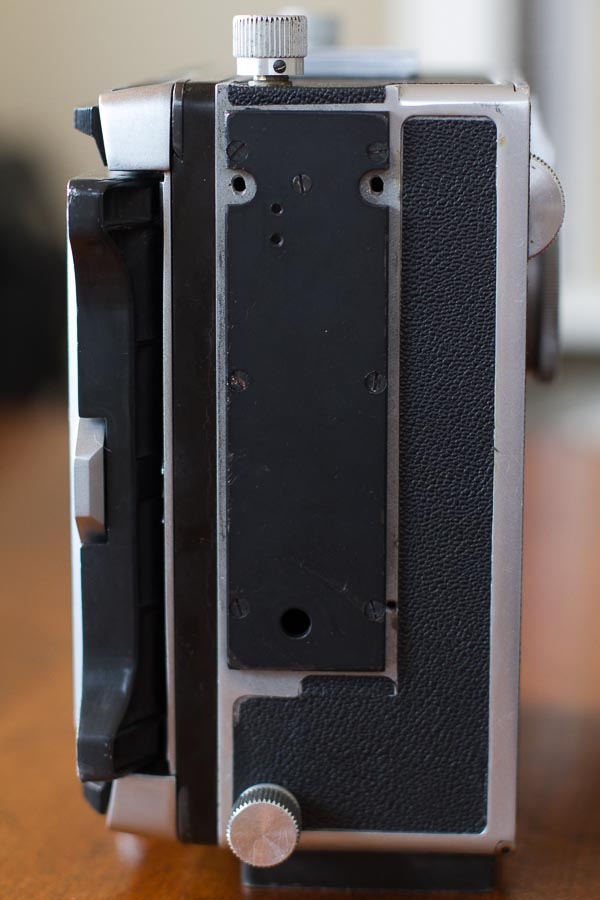
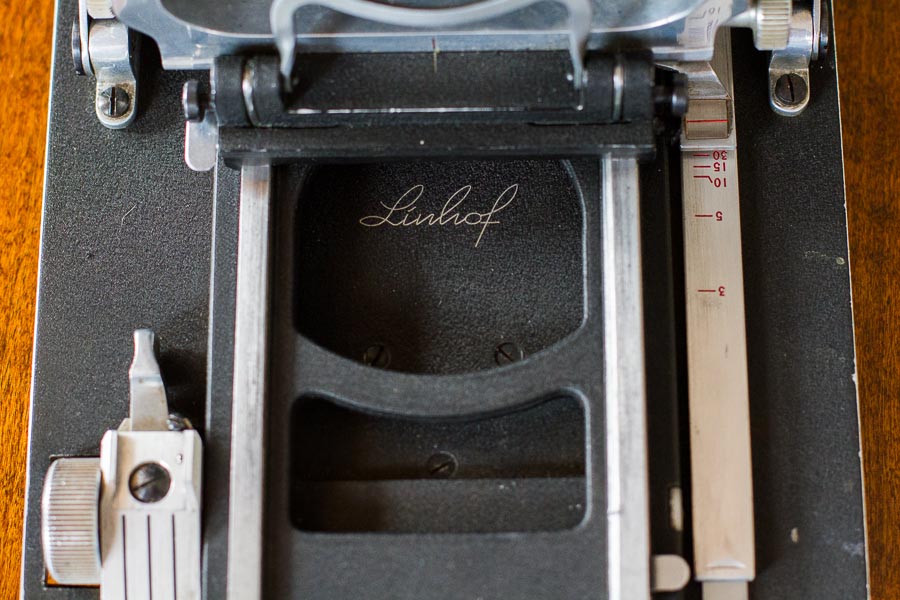
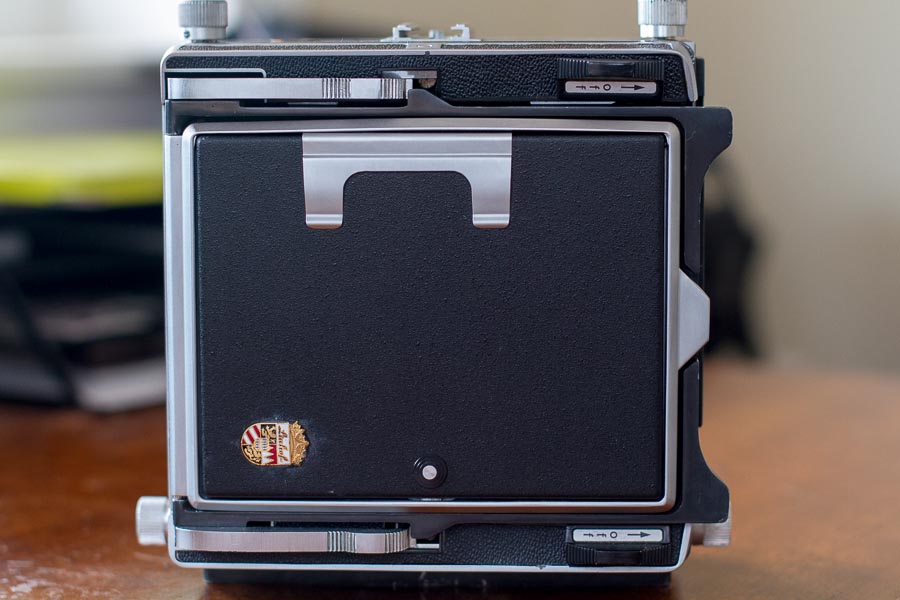
Next post, I will talk about the LF lenses I have gotten for this camera and share some of my first shots taken on questionable sheet film.
Ready for a shocker? All these photos were taking on my Canon 7d. That's right. Digital!

